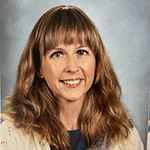Earth Day Every day, activities beyond April 22
By Kim Klinko, Environmental Literacy Committee
Every year educators around the world see April 22 on the calendar and plan activities to celebrate Earth Day. For most, this responsibility lands on the science teacher. I don’t know about you, but it’s often something that sneaks up on the calendar and the activity doesn’t have any connection to the current curriculum. Or, it’s an old activity that’s been part of the teacher’s curriculum for so long they forget why it’s even there.
How can we make Earth Day less of an afterthought then?
With a little foresight and strategic planning teachers can make Earth Day more purposeful. If you teach middle school or high school science, perhaps we can include other disciplines in our planning. Make this a cross curricular project even. This is a little easier to accomplish in the elementary classroom, but can be a great way to make connections across disciplines. The Earth Day 2025 website has endless resources to assist you in planning. From quizzes, to lessons, to Fact Sheets to action Plans, it’s a one stop website for all things Earth Day.
Another thought is that rather than making this a stand alone lesson, plan your year to better incorporate what you are learning into an Earth Day activity. I love the idea of making this a school wide effort. If you have advisory classes or CREW as we do in my school, every class can do something, different or the same, as a way to bring the whole school together. Perhaps there is a learning activity such as, a read aloud from The Lorax. This can culminate in an action project like cleaning the campus or community.
Earth Day doesn’t have to be accomplished in one day either. What about celebrating Earth Month in all of April? Attached is a calendar with daily activities that can be shared with the entire school.
Most importantly, Earth Day is every day. How do we incorporate these ideas year round? What can we do to encourage more sustainable practices as a school or school district? One idea is to start a club. At my middle school, we started an after school club called “Eco Warriors” a few years ago. It was just a group of students who wanted to take on small scale projects around campus. Today, I teach an elective class called Environmental Studies. We run the student-run recycling program on campus, plan lessons for the whole school to learn about topics like sustainability, climate change, and responsible purchasing and so much more. It takes one or two passionate adults to get started and you will see that you have interested and passionate students too. As Jane Goodall says, “Every individual matters. Every individual has a role to play. Every individual makes a difference.”
Resources:
About the Author

Kim Klinko currently teaches 7th and 8th grade science and environmental science at Tierra del Sol Middle School in Lakeside, CA. This is her 14th year teaching. She became interested in environment education while working toward her second Masters degree in Biology at Miami University, Project Dragonfly. She has been awarded for her Student-Run Recycling Program at Tierra del Sol. Kim volunteers on the CASE Environmental Literacy Committee as well as the CASE Conference Committee. In her spare time she enjoys yoga, getting outdoors, hiking and going to the beach as much as possible.





